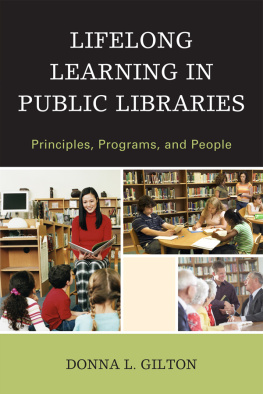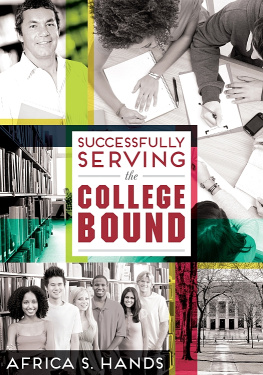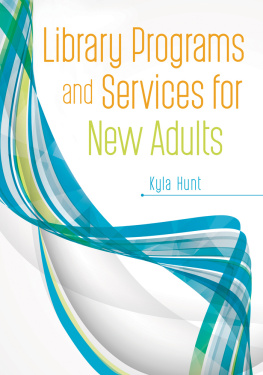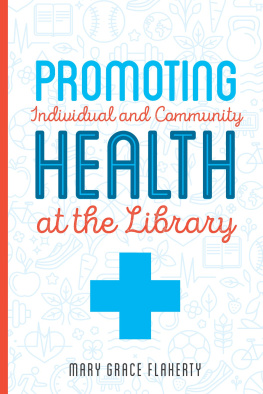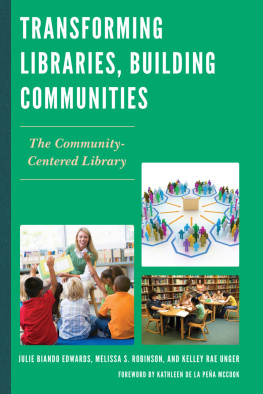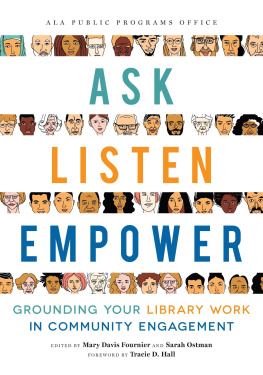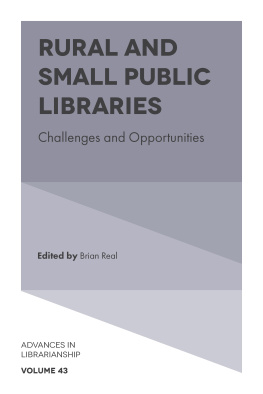
ALA Editions purchases fund advocacy, awareness, and accreditation programs for library professionals worldwide.

Jeffrey T. Davisis a branch manager with the San Diego Public Library. He has worked in branch and central libraries from the South Bronx (New York City) to downtown San Diego. His previous experience includes collection development and electronic resources management. He is interested in all things library, with a current focus on early learning spaces and the collection all around.
2017 by the American Library Association
Extensive effort has gone into ensuring the reliability of the information in this book; however, the publisher makes no warranty, express or implied, with respect to the material contained herein.
ISBNs
978-0-8389-1505-9 (paper)
978-0-8389-1581-3 (PDF)
978-0-8389-1582-0 (ePub)
978-0-8389-1583-7 (Kindle)
Library of Congress Cataloging-in-Publication Data
Names: Davis, Jeffrey T. (Jeffrey Trapp), author.
Title: The collection all around : sharing our cities, towns, and natural places / Jeffrey T. Davis.
Description: Chicago : ALA Editions, an imprint of the American Library
Association, 2017. | Includes bibliographical references and .
Identifiers: LCCN 2017004874 | ISBN 9780838915059 (pbk. : alk. paper)
Subjects: LCSH: Libraries and community Case studies. | Libraries and community United States Case studies. | Community information services United States.
Classification: LCC Z716.4.D385 2017 | DDC 021.2 dc23 LC record available at https://lccn.loc.gov/2017004874
Cover design by Alejandra Diaz. Imagery Shutterstock, Inc.
For Naomi and Theo
CONTENTS
T hanks to everyone who spoke with me about the work they are doing. Robert Anderson, Richard Beeland, Brett Bonfield, Shaun Briley, Chris Brown, Amy Calhoun, Mary Pom Claiborne, Sue Considine, Gretchen Crowe, Stacie Deng, Amanda DeWilde, Katrina Farrow, Kathleen Ferrier, Bill Folden, Jennifer Hoffman, Sarah Houghton, Nancy Howe, Rachel Hudson, Jennifer Inglis, Sandy Kallunki, Kara Logsden, Stephanie Loney, Katherine Malmquist, Lexy Mayers, Suzanne McGowan, Tim Moreland, Chris Olson, Anne OShea, Diana Plunkett, Carla Powers, Rebecca Ryan, Almis Udrys, Christina Wainwright, and Lisa Zicherman.
Thanks to the New York Public Library and the San Diego Public Library for the opportunity to learn and practice public librarianship.
Thanks to Chou, Gabi, Harriet, Leng, Luan, Michael, Ming-Lan, Nathan, Thao, Thuy, and Tomoe for your dedication and spirit.
Libraries Take on the World
... and the walls became the world all around
Maurice Sendak, Where the Wild Things Are
L ibraries do a lot. We share books, e-books, CDs, DVDs, databases, and expertise. Sometimes we share tools or seeds or toys. We provide shared computers and Internet access. We share 3-D printers. We offer classes. We share programs ranging from storytimes to yoga to book clubs to concerts to lectures. We share spaces to read, to work, to focus, to play, to explore, and to be at ease. The great range of library offerings attracts people of all kinds, matching a need or curiosity to the librarys many offerings. Its no surprise that in every city and town the library is a magnet and an anchor.
But theres much more, of course, that people ask of the places they live that isnt a part of libraries and neednt be. Cities and towns have parks, recreation centers, and nature. They have museums and dance studios, streets and transit, meetings and activities, history and all the stuff of local community, culture, identity, and civic collaboration. The places around us are made up of wonderful, incredible resources that arent the library and that the library doesnt have to duplicate. Good news! They werent all going to fit in the library anyway.
But access to those riches isnt as broad as it could be. Barriers of cost or of social, economic, or cultural inequality exist. Not every local resource is as welcoming or as community-focused as the library is. Many of the great assets of cities and towns are poorly shared. Thats where libraries come in. Shared access help with access is what libraries do.
Think, then, of the city, the town, the community, and all that it has to offer as a potential collection. The collection all around.
How do libraries help their communities use that collection? How can library members be helped to access the resources around them as easily as a storytime or a best seller? How can librarians help move city and town resources toward the public-goods end of the scale? Can librarians help local organizations meet the public halfway? Thats what this book explores.
Its interesting. Content the world over has gotten immeasurably more available. While barriers remain, the stuff of books and movies and music and research and knowledge is now unquestionably more abundant and accessible, thanks to the Internet, e-commerce, electronic bazaars and swap meets, digital communication technologies, user-generated content, and other online resources. Whether paid or free, digital or physical, the barriers to getting access to content are not what they used to be. Access can be confusing and often costly and theres much farther to go, but the change is undeniable. The skills and tools that libraries developed when content was scarce are now in less demand. Libraries are still navigating this sea change. Meanwhile, access to the local museum, theater, enrichment class, and neighborhood improvement process remains about where its been for decades. Its difficult for most people. There are barriers of cost and complexity, language and know-how, connection and convenience. Fortunately, the same skills and tools that libraries developed to facilitate access to content are valuable here. Librarians can help.
And they do! Countless programs of local access have sprouted up in libraries in recent decades. Libraries everywhere are engaged in efforts to improve access to the resources of our cities, towns, and natural places. An impressive variety of library work contributes to this goal. I set out to find diverse examples of this work and to introduce them to a wider audience. Exploring these programs should be valuable to librarians, library strategists, and community members looking for help in accessing their world. Importantly, these efforts cohere as a largely unarticulated service model: libraries and librarians as agents on behalf of the public to our great local resources all around.
Direction and Innovation
There is no shortage of innovation in libraries right now, but this book is not a guide to cool or worthwhile things that libraries are doing. There are lots of great new ideas. Too often, though, those new ideas are either novelties or bear little relation to library strengths. They dont generate momentum, accrete to anything new, or taken together help clarify what libraries are and what they do.
Work that is aligned that variously contributes to a platform for going farther, that builds institutional strength will be more lasting and consequential. This book explores and reappraises many projects old, new, and prospective that share a strategic direction: providing or expanding access to local resources. Most of these projects have received relatively little attention; in some cases, despite drawing on new technologies. A more purposeful mode of innovation can better harness the great energy and dedication in libraries.
Next page


